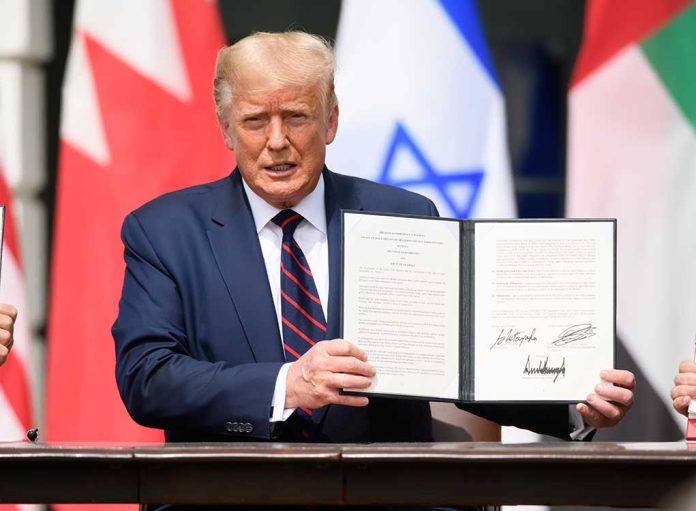
President Trump takes bold step towards dismantling the Department of Education, returning authority to states despite anticipated legal challenges from Democrats and teachers unions.
Key Takeaways
- President Trump signed an executive order directing Education Secretary Linda McMahon to facilitate the closure of the Department of Education and return education authority to the states.
- Congressional approval is required for complete dismantling of the department, as the executive order alone cannot eliminate a federal agency.
- Critical functions like Pell grants, Title I funding, and resources for children with disabilities will be preserved and redistributed to other agencies.
- The administration cites poor student achievement despite $3 trillion in federal education spending since 1979 as justification for the change.
- Department staff has already been reduced from 4,133 to 2,183 employees since Trump took office.
Trump Takes Action on Long-Standing Republican Goal
President Donald Trump signed a significant executive order aimed at dismantling the Department of Education, fulfilling a promise to his conservative base and taking concrete steps toward a goal Republicans have pursued since the department’s creation under President Jimmy Carter in 1979. The order directs Education Secretary Linda McMahon to begin the process of closing the department and returning educational authority to state and local governments, marking the most aggressive federal education policy shift in decades.
During the signing ceremony, Trump addressed McMahon directly, emphasizing the importance of the task ahead, “Linda, you’re going to be presiding over something that’s so important,” said Trump. The president assured that “useful functions” of the department would continue, including Pell grants and other essential student aid programs. This move is viewed by supporters as a necessary step to improve educational outcomes by empowering states to develop systems tailored to their specific needs.
Executive Order Limitations and Implementation Plans
While the executive order represents a significant policy shift, it does not immediately eliminate the Department of Education. Complete dismantling requires congressional approval, which presents a challenge even with Republican majorities. The order directs McMahon to “take all necessary steps to facilitate the closure of the Department of Education and return authority over education to the States and local communities while ensuring the effective and uninterrupted delivery of services, programs, and benefits on which Americans rely.”
The administration plans to transfer key functions to other federal agencies. The Treasury and Labor Departments may take over student loan management and workforce development programs. The Justice Department could assume civil rights enforcement responsibilities. Federal education funding would likely be converted into block grants with fewer conditions, giving states more flexibility but potentially raising concerns about accountability and equity protections.
Educational Performance Concerns and Budget Implications
The White House justified the move by citing disappointing educational outcomes despite massive federal spending. According to administration statements, the Department of Education has spent over $3 trillion since its creation, yet student achievement metrics show minimal improvement. Statistics referenced include low proficiency levels in math and reading among U.S. students and poor rankings in international comparisons, particularly when measured against educational systems in countries like Denmark, Norway, and Finland.
With a $268 billion budget last year, representing 4% of the U.S. federal budget, the Department of Education manages $1.6 trillion in student loans and distributes billions for K-12 schools through programs like Title I for disadvantaged students and IDEA funding for children with disabilities. The department has already seen significant reductions in staffing, with employees cut from 4,133 to 2,183 since Trump took office, suggesting the dismantling process has already begun administratively.
Anticipated Legal Challenges and Timeline
Democrats, teachers unions, and progressive education advocates are expected to file lawsuits challenging the executive order. Legal experts anticipate a prolonged battle that will determine the scope and timeline of any departmental changes. Previous attempts to significantly reduce the department’s authority or merge it with other agencies, including efforts during Trump’s first term to combine it with the Labor Department, have faced substantial opposition and ultimately failed.
The administration acknowledges that the full dismantling process will take time and require congressional cooperation. In the interim, essential services, including student loan management, Title I funding distributions, and civil rights enforcement, will continue through existing or reorganized structures. Education stakeholders and policy experts will be closely monitoring developments as implementation plans are refined and legal challenges unfold in the coming months.
Sources:
IT’S DONE: Trump Signs Monster Executive Order Aimed at Closing Education Department
What to know about how Trump’s executive order will affect American education
Trump signs executive order aimed at dismantling U.S. Department of Education







